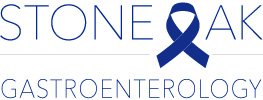Esophageal Dilatation
Causes of Esophageal Blockage
There are several causes of blockage or stricture of the esophagus. They all can make swallowing food and/or fluids difficult. The physician’s first job is to find the reason for the stricture or narrowing. The answer can usually be provided by the medical history,
physical exam, x-rays, and endoscopy which is a visual exam of the esophagus using a flexible fiberoptic tube.
Acid Peptic Stricture – This condition is very common. The stomach produces acid which, in turn, can reflux into the esophagus. This event is usually made worse by the presence of a hiatus hernia. Over time, the acid and peptic stomach juices injure the esophagus, causing inflammation and then scarring. The fibrous scar then contracts and narrows the esophageal opening.
Schatzki’s Ring – This condition is a narrow ring of benign fibrous tissue constricting the lower esophagus. Physicians still do not know how it develops.
Achalasia – This condition is uncommon and quite fascinating to physicians. The problem is a persistent and marked spasm of the lower esophageal muscle. This spasm just does not open up to allow food and fluid through. The result is a persistent blockage
with subsequent slow trickling of the esophageal contents into the stomach.
Ingestion of Caustic Agents – Children are particularly prone to swallowing liquid lye and other agents which can severely burn the esophagus, leaving it narrowed.
Tumors – Various forms of tumors, benign and malignant, can block the esophagus. This condition is obviously very important to diagnose and be treated immediately.
Heredity – The esophagus may be partially or completely blocked at birth.
Methods of Esophageal Dilatation
In most instances, the problem is a mechanical one with an obstruction acting like a dam across a stream. Therefore, the treatment must be mechanical. The dam must be broken. After a diagnosis is made, the physician determines the best method of treatment. The physician has a variety of techniques available. Each has benefits and is appropriate in specific cases. The physician will always discuss these options with the patient.





